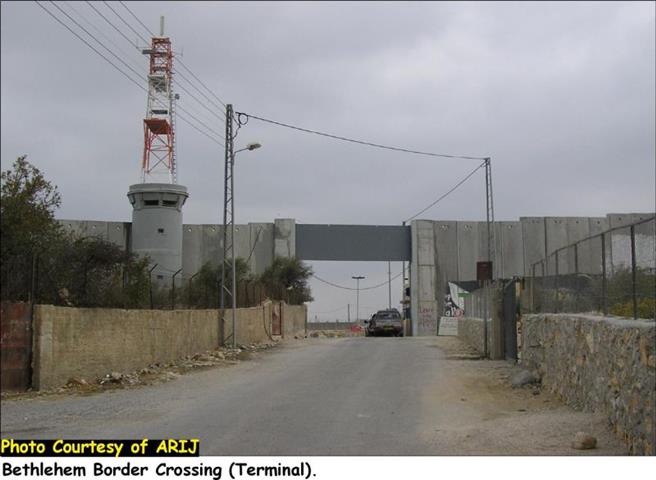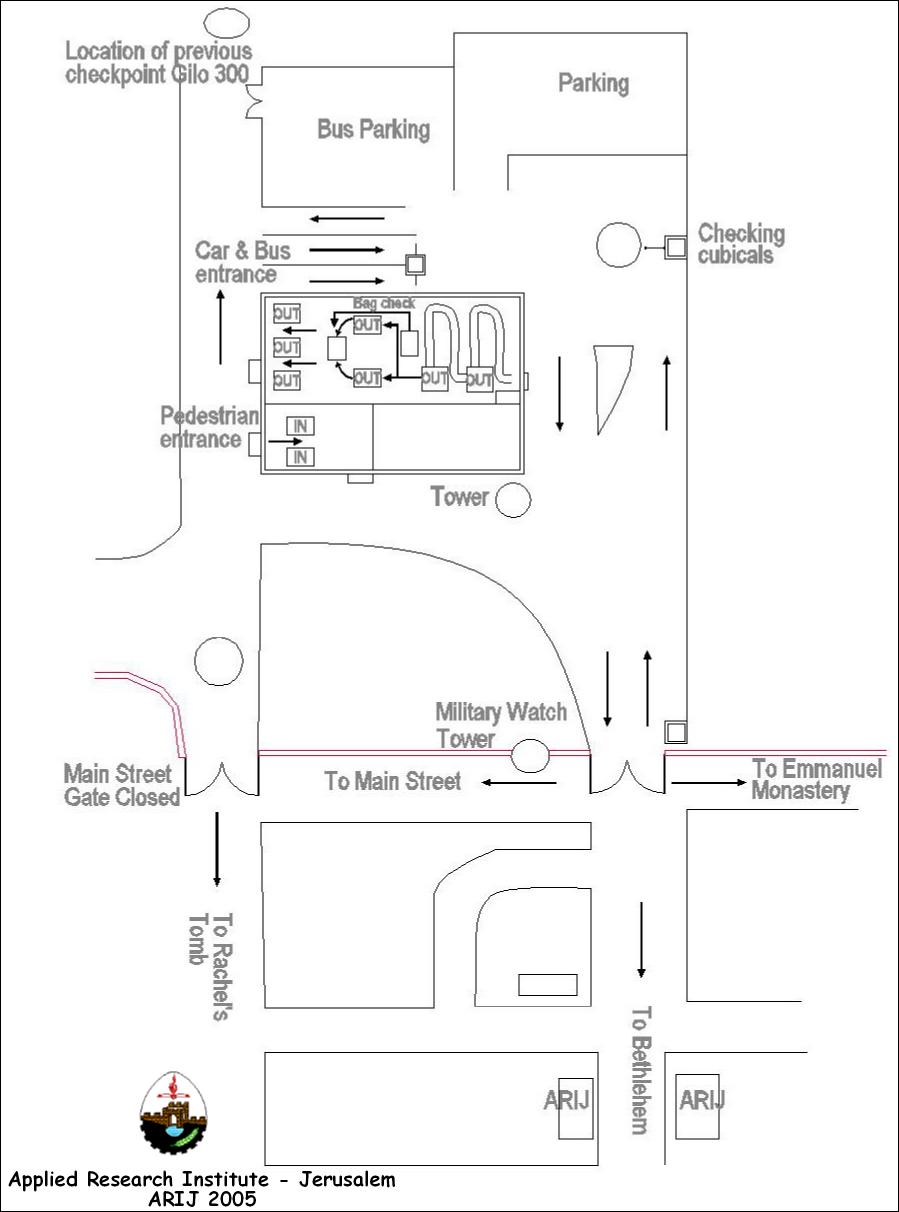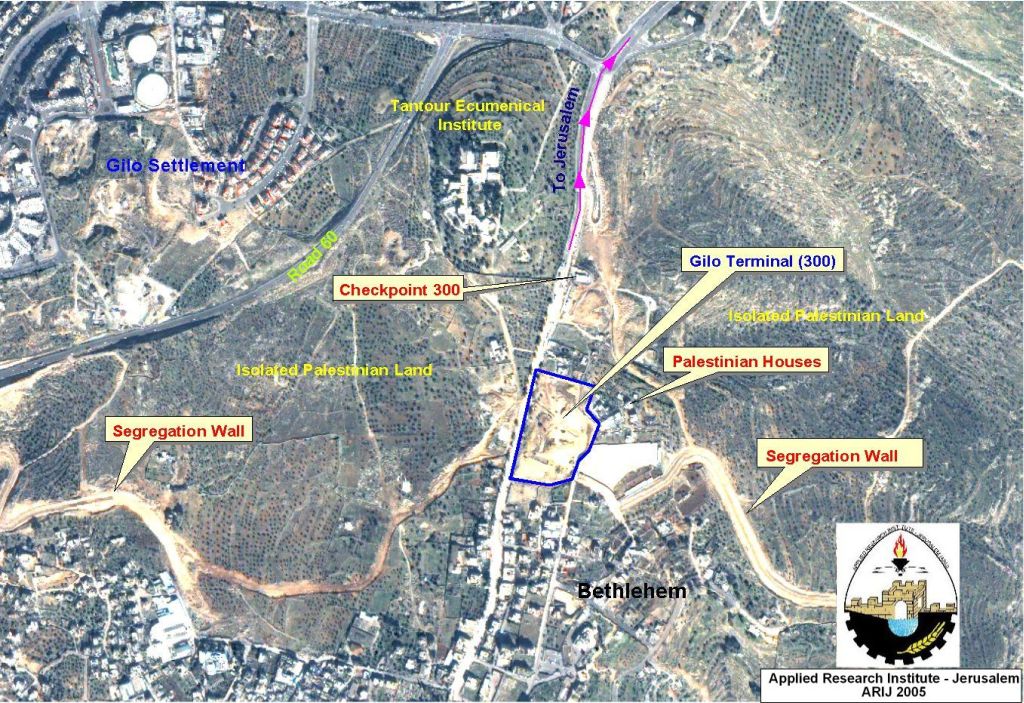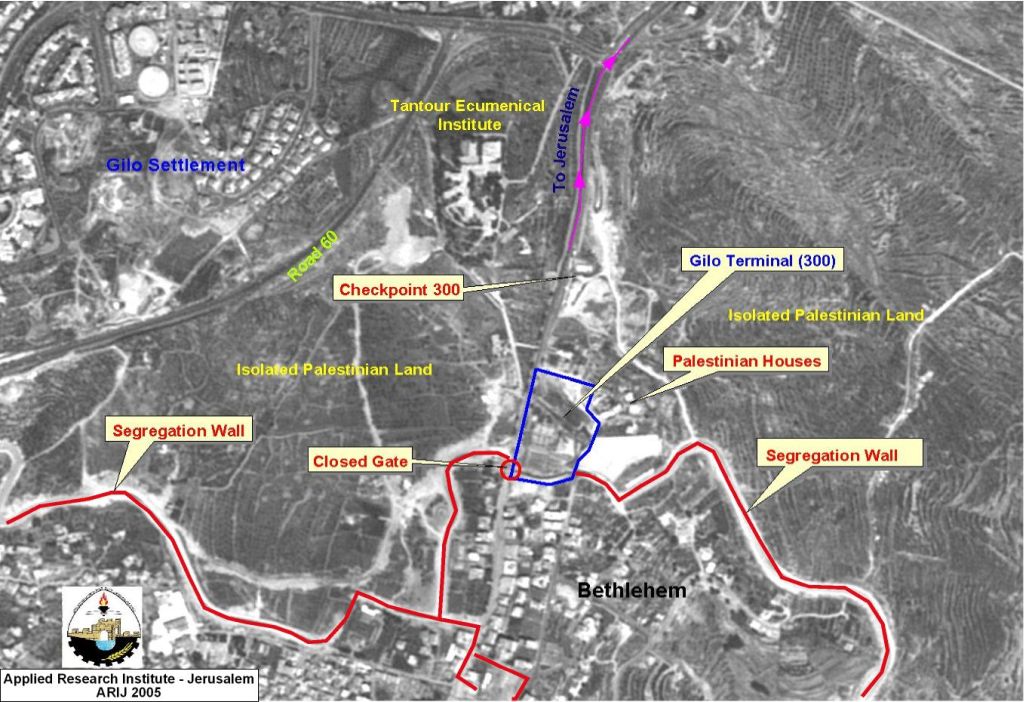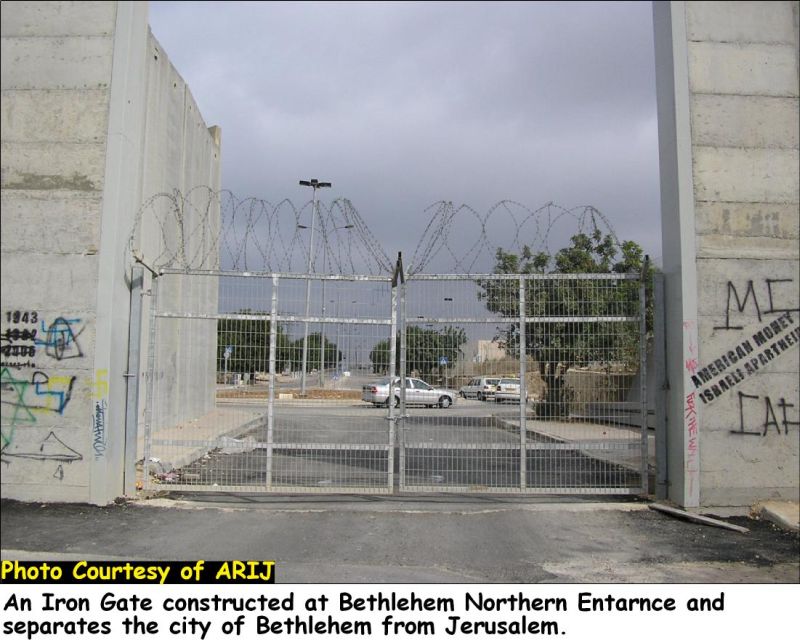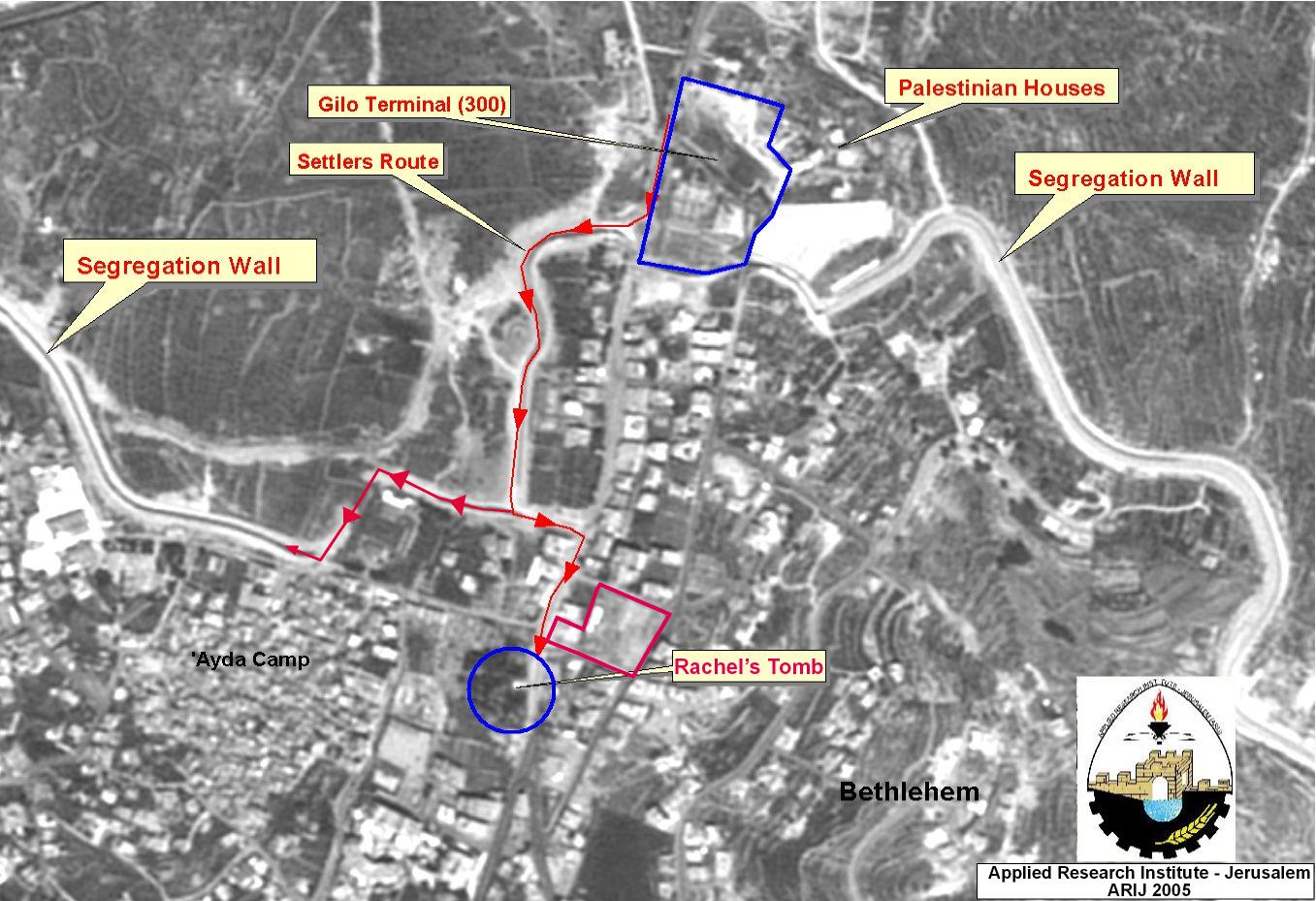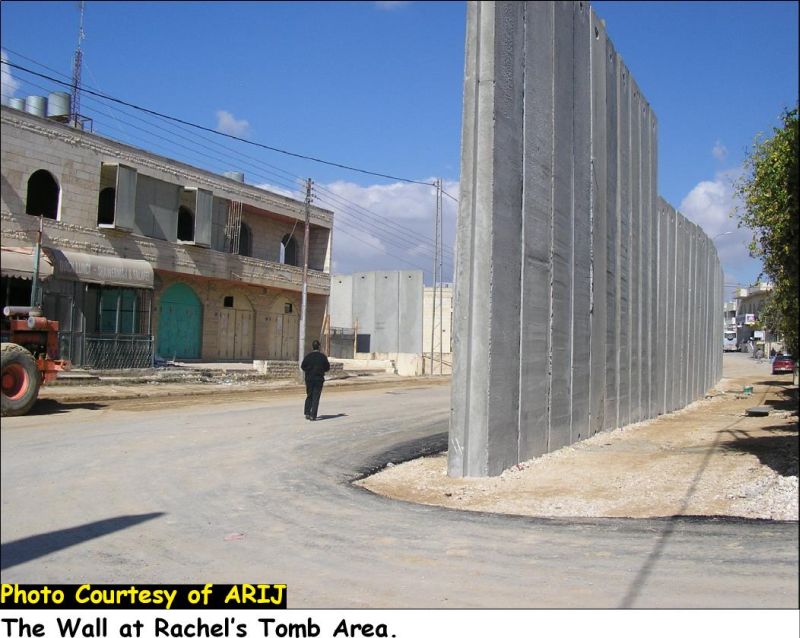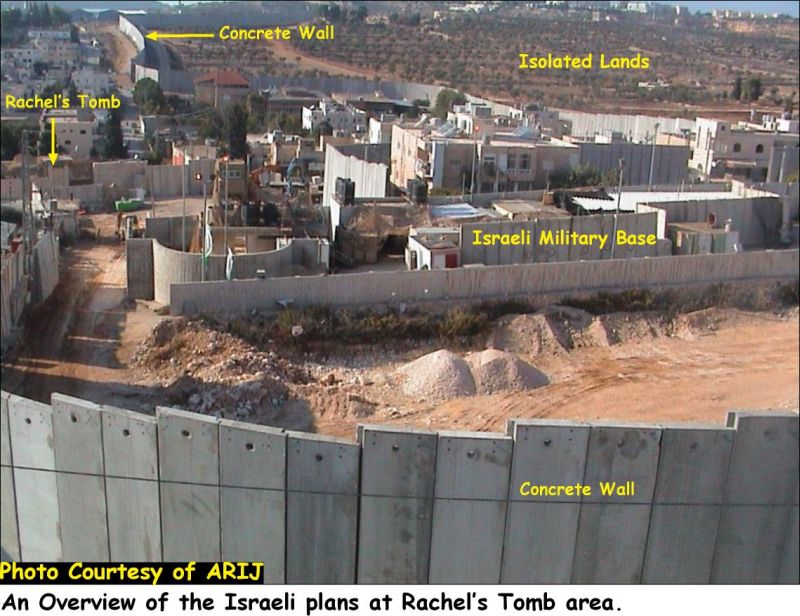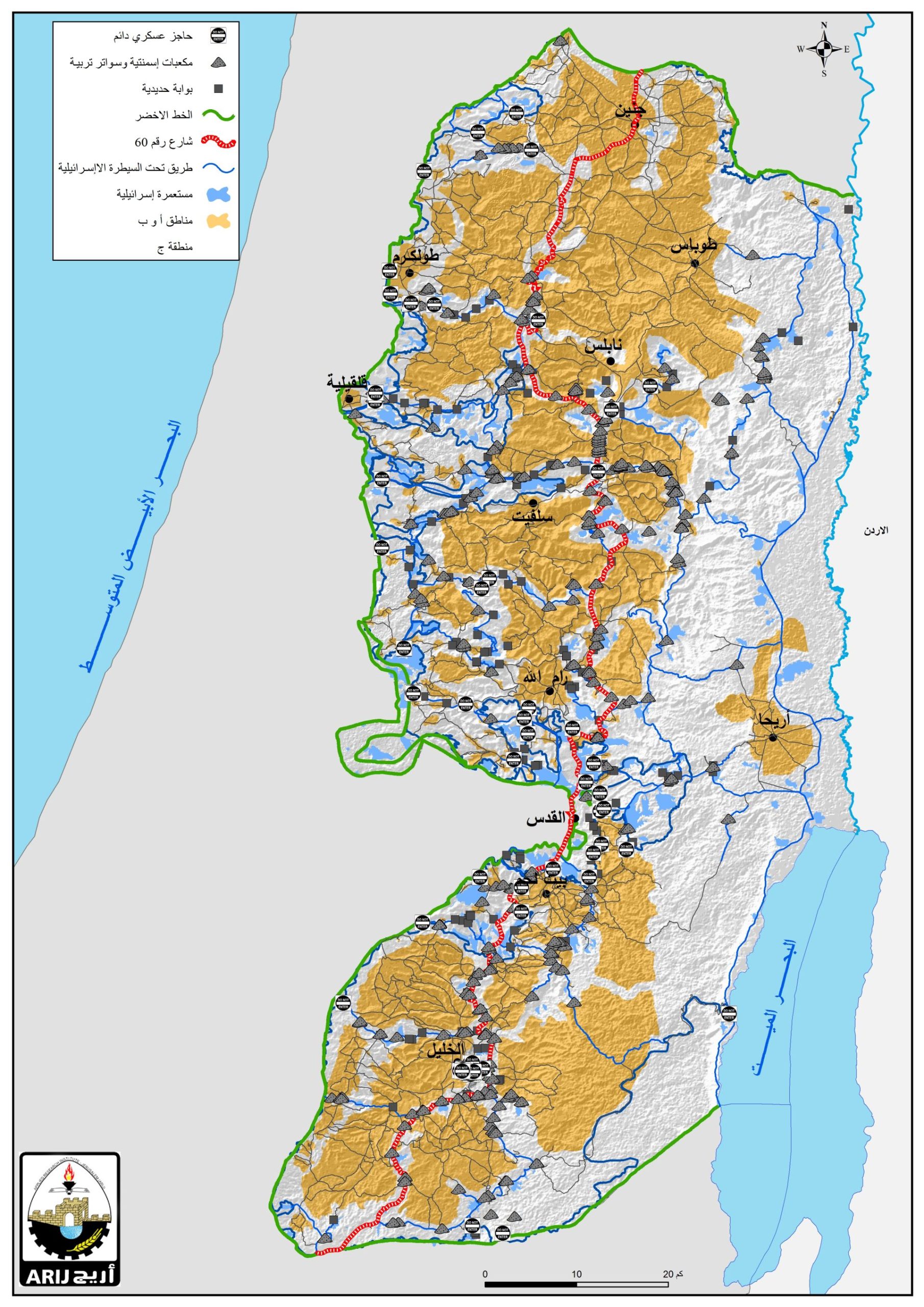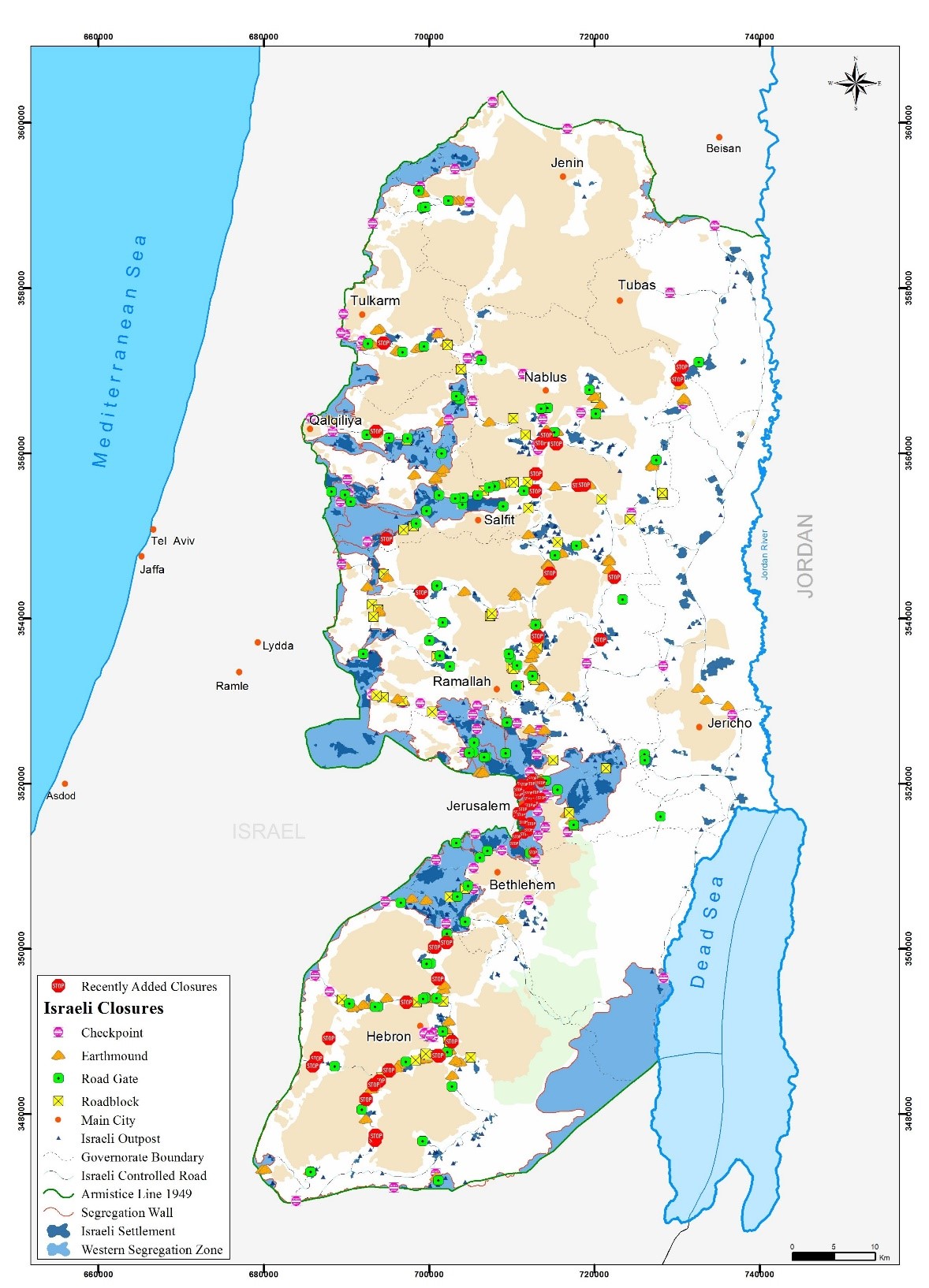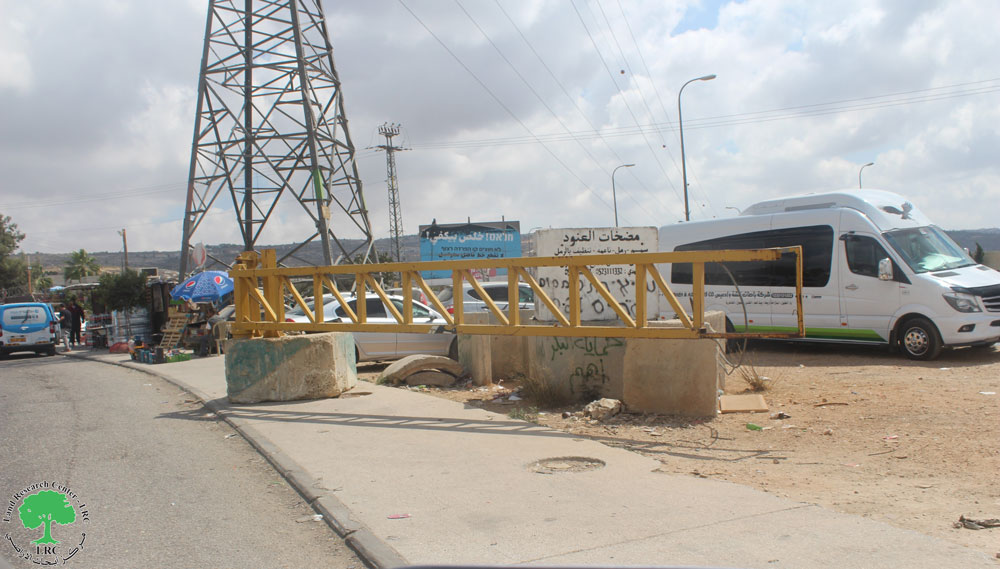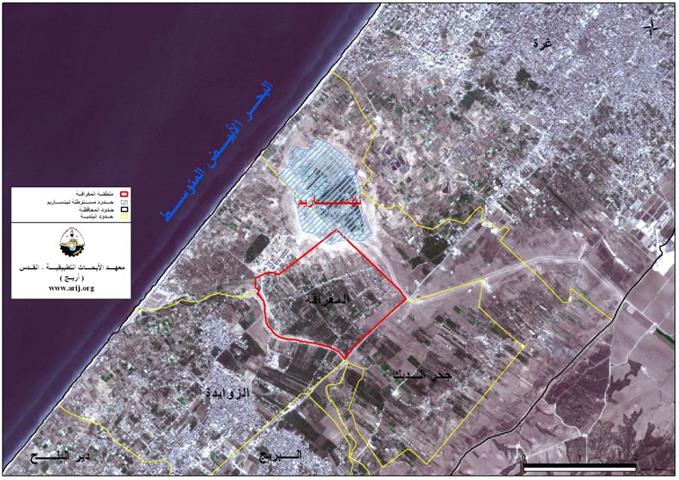On November 15, 2005, while the Palestinians were commemorating the seventeenth anniversary of the Palestinian declaration of independence, the Israeli authorities inaugurated terminal '300' in the northern entrance of Bethlehem Governorate. This is the first terminal out of ten that are being constructed along the Segregation Wall in the West Bank to be inaugurated. Israel treats this terminal as an international border crossing although it is located in the heart of the West Bank. See Photo 1
Movement from Jerusalem to Bethlehem and vise versa is supposed to take place through this terminal. Inside the terminal people are classified according to the identification documents they carry and the color of their vehicle plates. While diplomats can use their cars to go in and out of the terminal, Palestinian Jerusalemites driving cars with yellow (Israeli plates) were prevented from entering Bethlehem with their cars and were told that they can only enter as pedestrians unless they have employment cards from one of the international organizations or medical institutions. The tourist buses park at a parking plot north of the terminal and pass through the terminal building into the other side where another buses are waiting for them, and vise versa on the way back to Jerusalem.
There are two lanes entering the terminal from Jerusalem, one for the cars with yellow plates with their passengers caring all the sufficient documents and the other one for tourist buses, both are checked at the entrance, the tourist bus unloads and parks at the parking lot. As for the pedestrians, they enter the terminal building on their way to Bethlehem where their IDs/ passports and their permits which are issued by the Israeli civil Administration if they carry a Palestinian ID are checked and they proceed out of the terminal. Passing from Bethlehem to Jerusalem entails passing through several checking points where there are Israeli officials sitting in reinforced cubicals and communicating with the public through glass and using microphones check the IDs, permits and passports. One has to cross four of these on his/her way out of the terminal. One's bags, jackets or luggage's are checked separately in an X-rayed machine. Moreover one has to pass through the metal detector machine and take off anything that might beep to be able to pass. Additionally there are grim dogs accompanying the Israeli soldiers sniffing the pedestrians. See Structure of the Border Crossing
Ikonos images 1 & 2 of Bethlehem Northern Entrance.
The Constructions at Bethlehem '300' Terminal started during the year 2004. A number of caravans were added to the site in addition to electronic equipments, cameras, microphones, advanced surveillance equipments, watch towers and security establishments, transforming the site into a terminal and totally separating Bethlehem from Jerusalem which will harm the local economy of the city and will hinder pilgrimage from free access to religious shrines in Bethlehem and Jerusalem. The current terminal gate lies nearly one kilometer east of the gate already constructed on the main road between Bethlehem and Jerusalem, the historic route that was used for decades by locals and pilgrimage. See Photo 2
This Iron Gate that came to terminate the Segregation Wall in the northern entrance of Bethlehem was closed, and is anticipated to open twice a year for religious missions, Christmas and Easter Times. Furthermore, the Israeli military busses coming from Jerusalem and heading to Rachel's Tomb area will access the Gilo 300 checkpoint and directly drive into the road already constructed alongside the Segregation Wall to then reach another gate constructed north of the Tomb area and guarded by the Israeli soldiers. See Photo 3 & Map of the route of the buses. & .
The segregation wall construction is coming to an end at Bethlehem northern neighborhood around Rachel Tomb, were the Israeli occupying forces are placing the high prefabricated concrete slabs of more than eight meters high along the main Bethlehem-Jerusalem main road. More than 40 stores and tourist amenities located in the area are severely affected by Wall constructions. In addition, the inauguration of the new terminal along with the existing concrete wall has caused the isolation of an industrial area along with 12 Palestinian houses to the west of the terminal. The houses are owned by the families of Khoury, Abu Sbeiha, Anistas, Bandetto, Al Saras, Al Jerashy and Shaha. It is worth mentioning that that area of the houses and the industrial area lie within Bethlehem municipal boundaries and families living in this area are totally dependent on Bethlehem city center. The access of those families will be limited due to the restrictions the Israeli soldiers impose on people entering the city of Bethlehem. See Photo 4, Photo 5 & Photo 6 , &
Eventually Rachel's Tomb area will be annexed to Israel violating United Nations Security Council's Resolutions and Oslo II Interim Agreement between the Palestinian Authority and Israel of 1995 (Annex I, article V, section 7).
Previously in September 2005, the Israeli Government announced the construction of 10 main terminals (passages) in the West Bank in addition to 23 crossing points along the path of the Segregation Wall as reported by Haaretz daily news on September 9, 2005. The ten terminals included Mazmuria passage in Bethlehem, Tarqumia in Hebron, Al Jalameh in Jenin, Sha'ar Ephraim in Tulkarm, Betunia in Ramallah, Hasam Tzahub in the upper Jordan valley, Terminal 300 in Bethlehem, Shu'fat, Az 'Ayyem and Qalandyia in Jerusalem. The ten terminals are to control the movement of more than 2 million Palestinians once they're fully constructed. Five of these terminals will be trade terminals under the bases of back to back goods exchange. Construction is nearly done in Qalandiya, Betunia and Hasam Tzahub checkpoints.
It is worth mentioning that Israel after the 1967 war has unilaterally expanded the Jerusalem municipal boundary on the expense of 28 villages from Jerusalem, Bethlehem and Ramallah governorates. Bethlehem governorate lost 6844 dunums of land in the northern part of the governorate from the cities of Beit Jala, Bethlehem and Beit Sahour (3147, 2487 and 1210 dunums respectively). The lands were later annexed to the state of Israel. Construction of the Segregation Wall took place further south of the Jerusalem municipal boundary thus annexing more lands from Bethlehem and placing them north of the Segregation Wall and off reach of the land owners and the local residents. These areas include 279 dunums from northern Bethlehem City, 722 from northern Beit Sahour city and 3527 dunums from western and northern parts of Beit Jala city. The terminal is run by the Israeli police forces indicating that Israel is treating the land the terminal is constructed on as part of the Israeli state.
With constructing and operating this terminal Israel is breaching the United Nations Security Council's resolutions especially resolutions 242 and 338 which demand Israel to withdraw from Territories it occupied during the 1967 war. As well as the United Nation's General Assembly Resolution 40/168 for the year 1985 which 'determines that Israel's decision to annex Jerusalem and to declare it as its 'capital' as well as the measures to alter its physical character, demographic composition, institutional structure and status are null and void and demands that they be rescinded immediately; and calls upon all Member States, the specialized agencies and all other international organizations to abide by the present resolution and all other relevant resolutions and decisions (Article 7) and 'Declares all Israeli policies and practices of, or aimed at, annexation of the occupied Palestinian and other Arab territories, including Jerusalem, to be illegal and in violation of international law and of the relevant United Nations resolutions' (Article 4).
Prepared by:
The Applied Research Institute – Jerusalem


